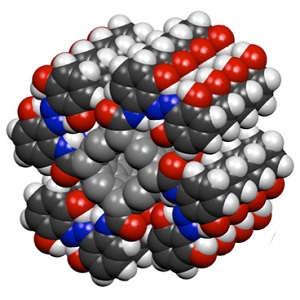MIT developing photochemical battery technology
 All sorts of solar power technologies, from photovoltaics to thermal solar and concentrating photovoltaics, are in action these days, so entirely new ideas are becoming harder to find.
All sorts of solar power technologies, from photovoltaics to thermal solar and concentrating photovoltaics, are in action these days, so entirely new ideas are becoming harder to find.
But how they’re being explored—well that’s a different ball of wax, entirely. That’s the case of new research into photochemical thermochemical energy storage that’s being undertaken at the Massachusetts Institute of Technology (MIT) by Associate Professor Jeffrey Grossman and his team, including post-doc researcher Alexie Kolpack.
Previous research into such devices in the 1970s and 1980s created devices that could absorb sunlight and store it as thermal energy in a chemical solution—like a battery.
“Those molecules all degraded over a short number of cycles,” Grossman said.
Another potential solution was explored using ruthenium.
“It could cycle almost indefinitely,” he said. But ruthenium is rare and expensive.
The result was a technology that came and went quickly, according to Grossman.
“It went because there were no materials that could cycle [with stability]. We have a whole new arsenal of capabilities. We can throw at this problem, and we can really revisit the issue,” he said.
The group is now working with azobenzene-functionalized carbon nanotubes, which have shown the ability to store solar energy indefinitely and be recharged by exposure to the sun.
When there’s a trigger, like a flash of light, a catalyst or temperature change, the stored energy is released as thermal energy. The devices can be tuned to react to certain light frequencies, use inexpensive materials and can provide energy storage capacity on-par with lithium-ion batteries. The research was published in the journal Nano Letters.
Depending on the materials used the thermal energy could reach temperatures of 600 degrees Kelvin (620.8 degrees Fahrenheit—water boils at 212 degrees Fahrenheit), or significantly less, depending on the end-use.
“We are exploring a number of applications, including portable power generation,” Grossman said. “There are micro-reactors [being developed] that can generate electricity from low-grade heat fairly efficiently.”
But the team is also looking at using the chemical in conjunction with large-scale concentrated solar power projects. Such projects use a medium, like molten salt, to superheat water into steam for generation. The molten salt retains heat excellently, but as it’s used at night to produce steam, its temperature goes down, reducing its efficiency. Such systems can work with a natural-gas fired generator.
But this research could yield a system that works in tandem with the existing CSP system.
“This would be a fluid that would be pumped through a transparent tube,” Grossman said. Then, as the temperature of the molten salt decreased at night, the thermochemical reaction could be triggered, reheating the water or molten salt.
“Another application that’s very simple is to use it to heat water,” Grossman said. “And 2.5 billion people don’t have enough water for sanitation. This could this be a cheap means for boiling water.”
Research into the materials and new materials the photochemical devices will interact with is ongoing, according to Grossman. Though still in research development, Grossman and associates are in early stages of talks with companies and investors to move the technology forward, he said.



